Housing pressures are causing a reduction in the UK’s green belt land. Rosie Jones, Assistant Consultant at Argyll Environmental asks what can be done to protect our countryside?
The recently revised National Planning Policy Framework (NPPF) addresses a new approach to deliver the government’s ambition to build 300,000 homes a year.
While housing applications on green belt land continue to increase, we address the environmental risk and controversy of the increasing pressure to build homes.

Negative effects of housing pressures
Housing pressures in the UK are having many negative effects: congestion and traffic jams, pressure on local services such as schools and doctors, and a reduction in green belt land. As our population is projected to reach over 73 million in 2035, the pressure to provide homes has increased, with green belt housing applications now reaching approximately 460,000.
Green belt land can be defined as areas that are used in land use planning to protect areas of undeveloped, wild or agricultural land that surrounds or neighbours urban areas. The main purpose of green belt land is to control and restrict urban sprawl and maintain land for agriculture, forestry and habitats. There are currently over 1.6 million hectares of green belt land in England, which equates to approximately 13% of total land area in England (Office of National Statistics, 2017).
Building on green belt land
The Local Planning Authority Green Belt stated that between 2016-2017, 790 hectares in green belt land was removed as a direct result of increasing developments for residential housing.
Building on green belt land can also result in a loss of habitats and negatively affect ecology and wildlife, with campaigners arguing that the supposed benefits of building on green belt land do not outweigh the negative effects. Green belt land isn’t just to prevent urban sprawl, but also to ensure that our wildlife and natural habitats remain protected.
Building on such land can ruin some of the country’s most pristine habitats and negatively affect our rarest species. For example, rare ground nesting birds like the Nightjar and the Silver-Studded Blue butterfly, whose habitats can be devastated by the noise and pollution from the extra traffic developments generate.
Green belt Vs Housing crisis
There is ongoing debate between developers and campaigners that green belt land could be used to build new affordable homes that the UK desperately need. Matthew O’Connell, a housing adviser at the Country Land and Business Association stated, “despite the acute need for new homes, the green belt was reduced by less than 0.05% between 2016-17 and it still covers a greater area than developed land in England.”
Policy regarding green belt land has always stated that the restrictions are in place to prevent development occurring on the land. The head of policy at the Countryside Alliance, Sarah Lee, said that some land should be removed from the green belt and stricter rules should be placed on the remainder. Alternatively, the Green Party’s co-leader Jonathan Bartley stated that the government should be investing in increasing social and affordable housing on the numerous brownfield sites we have available, act on empty homes, and introduce a land value tax to encourage the use of vacant land.
Moving forward, it is important that policies put in place to protect greenbelt land include all stakeholder’s views. For example, ensuring that local councils have allocated sites for developers that do not encroach onto protected areas of land.
Brownfield opportunities
Additionally, councils should encourage new developments to be built on brownfield sites, rather than developing on untouched land. Revising the boundaries of green belt land could also be an option moving forward, with many arguing that it would have very little effects to the overall percentage of protected land we currently have.
The Telegraph has released an interactive map to show where green belt land is located: www.telegraph.co.uk/news/earth/greenpolitics/planning/9708387/Interactive-map-Englands-green-belt.
For more information on Argyll Environmental, click here.






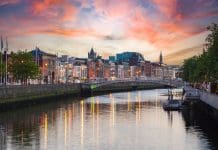

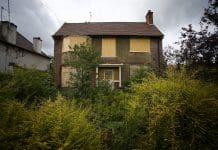

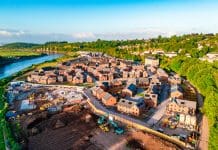
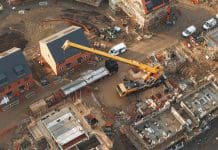

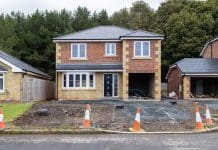
It is inevitable that green belts will have to be reviewed. They were introduced many years ago and time and pressures have moved on. Often they have had negative effects, with housing areas jumping over the green belt to colonise rural areas beyond, which have little or no transport infrastructure to support them thus resulting in commuters from previously rural areas clogging up roads. The advent of green belts stopped dead the natural generic growth of towns which can be seen in many towns and cities today. Look at any town and see the medieval centre, expanding through the centuries to Georgians, then Victoriana, between war and post war building, through to the 1960’s. Then it stops dead, jumps the green belt. Green belt policies have pleased the vocal not in my back yard contingent, but caused immense problems to rural areas elsewhere – They no longer work.
This is typical of the narrow view held by some people. The amount of land which is not Green Belt but still ‘open countryside’ in England remains and the scale of land take across England is minimal. We need to plan for some successful new towns on the model of Milton keynes to get out of the housing crisis our country has never addressed for 50 years.
The official Green Belt having been conceived in the 1940’s by Lord Abercrombie was sound when we had c.49M people.
We now have 63.2 M, an increase of 28% yet little to no change in the area which can be used for urban settlements. This coupled with an almost rabid fervour to freeze land as sterilised by labelling it as ‘Green Belt’ has led to strange anomalies occurring where classic Brownfield land becomes sterilised as well. I do not defend creating new settlements in the middle of nowhere (as someone tried near me recently) but the ossification of land in an urban street within 200 mtrs of an M&S shows how the system has been abused.
We should not let certain sectors of society over dominate the conversation and have each and every occasion reviewed to meet housing needs with a deep link to services such as ; roads, schools, shops etc and preserve that which should be preserved. use that which is sensible and it will remove the demand for building in ‘impossible’ sites which are only justified by the lack of supply elsewhere.